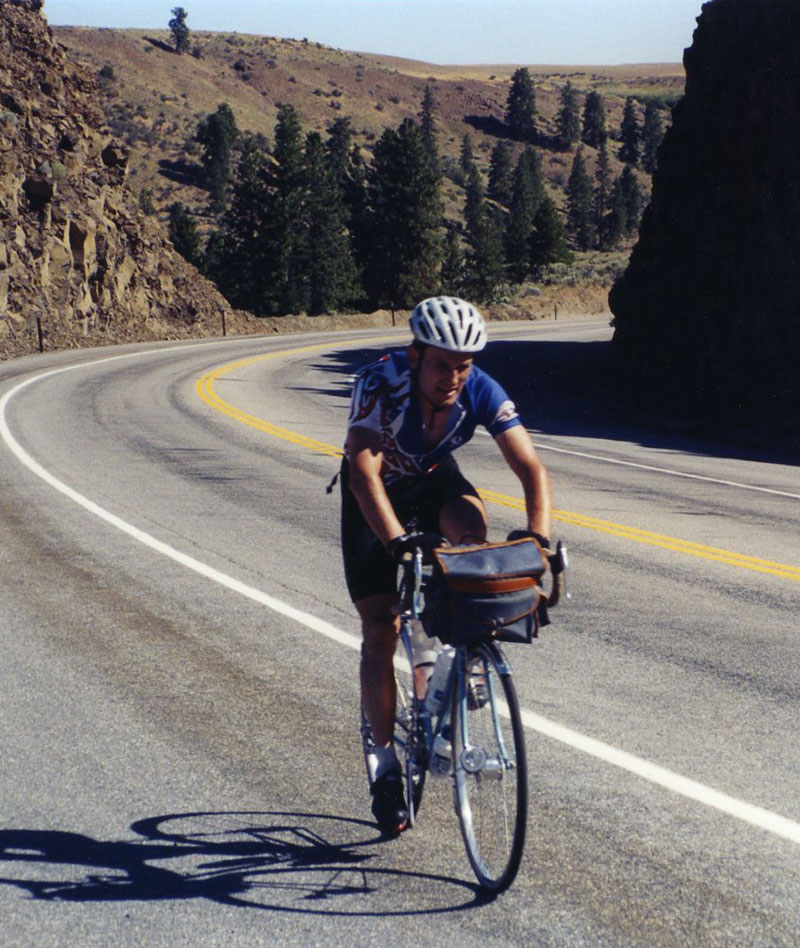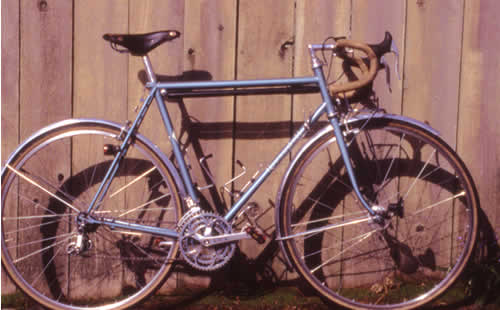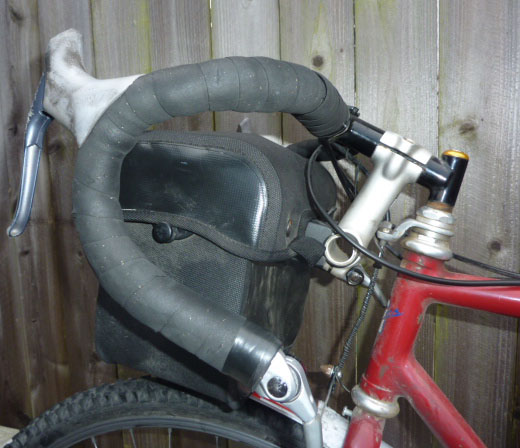A Journey of Discovery, Part 2: Handlebar Bags and Aluminum Fenders

In the last installment of this series, we looked at the bikes we rode when Bicycle Quarterly got started almost a decade ago. How did our preferences change from our familiar bikes with mid-trail geometries, 700C x 28 mm tires and saddlebags to low-trail 650B bikes with much wider tires and handlebar bags?
Influenced by Mike Kone (then of Bicycle Classics) and Grant Handley, I had admired the French cyclotouring bikes from René Herse and Alex Singer for a while. The consensus back then was that they were beautiful, but probably not great to ride. Except that nobody I knew had ridden one for any significant distance…
Paris-Brest-Paris 1999 was a bit of an eye-opener for me. At the finish, I bought Bernard Déon’s wonderful book Paris-Brest et Retour, which chronicles the history of this fascinating event. And there I learned about the amazing performances of randonneurs in the 1940s and 1950s, on classic cyclotouring bikes. I also visited Cycles Alex Singer, and saw bikes that were far more sophisticated than my own.
As I did more randonneuring, I realized that having my luggage accessible in a handlebar bag would be better than having to stop every time I needed something out of my saddlebag. However, I had heard that handlebar bags negatively affected the handling of the bike. How did the randonneurs in Déon’s book ride 765 miles with their full handlebar bags? I noticed that the French bikes all used a bag-support rack that securely mounted the bag as low as possible, rather than suspending a floppy bag from the handlebars high above the front wheel. On a return visit to Paris, I asked Ernest Csuka at Cycles Alex Singer about this, and he confirmed that a stiff rack was key to good handling with a handlebar bag.

When my frame needed some repairs, I used the opportunity to incorporate what I had learned. I had a custom rack made, as well as a decaleur. I made the correct braze-ons, and the builder added them to the fork. When I rebuilt the bike, I replaced the plastic fenders with aluminum ones, mostly because I preferred the way they looked. My bike now began to look like a French randonneur bike (see above, click on photos for higher resolution).
The handlebar bag was great, and with the rack supporting it, the handling was fine. The biggest surprise were the aluminum fenders. Not only did they offer more coverage, but they also kept the water inside, rather than have it drip from the edges. My feet (and my bike’s chain) stayed much drier and cleaner. And they were lighter, too! I began to realize that the French constructeur bikes were not just about aesthetics, but also about function.

My friend Mark also saw the advantages of a handlebar bag, and came up with his own solution: He attached a second (threadless) stem to his original one. Where the steerer tube usually goes, he inserted a short length of PVC pipe. Now he had a secure, low mount for his Ortlieb handlebar bag. And soon thereafter, he also installed a set of Honjo aluminum fenders. For the time being, we were very happy with our bikes.
But our journey of discovery was far from over…
Click here to read Part 3 of this series.
Click here to return to Part 1.


